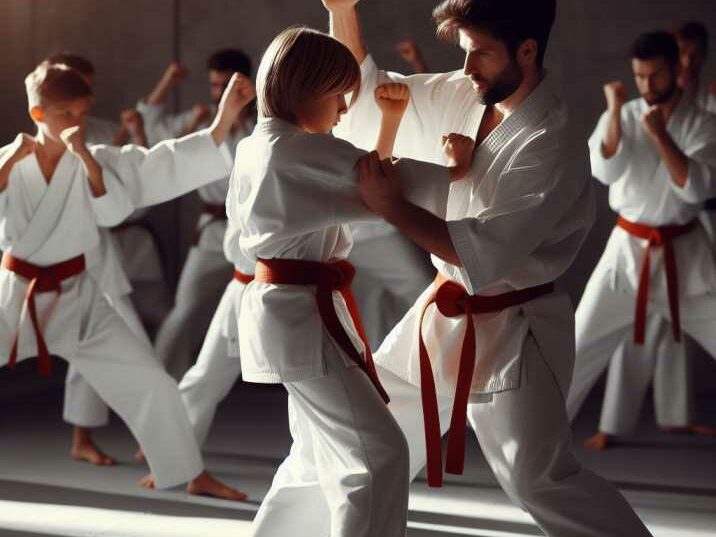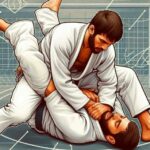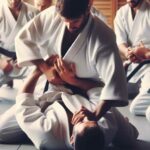Introduction:
Table of Contents
Karate, a martial art originating from the Ryukyu Kingdom, now known as Okinawa, has evolved over centuries into a rich tapestry of styles, each with its unique techniques, philosophies, and traditions. From its humble beginnings as a form of unarmed combat to its widespread global popularity today, karate has undergone continuous refinement and diversification. In this comprehensive exploration, we delve into the fascinating world of karate styles, uncovering their origins, characteristics, and the plethora of options available to practitioners.

The Origins and Evolution of Karate:
To understand the vast array of karate styles, it’s crucial to delve into the history of this martial art. Karate’s roots can be traced back to the indigenous martial arts of Okinawa, which were influenced by Chinese martial arts, particularly those from the Fujian province. Over time, these techniques were refined and systematized into what is now recognized as karate.
The Vast Spectrum of Karate Styles:
Karate encompasses a wide spectrum of styles, each with its distinct techniques, training methods, and philosophies. From traditional styles that emphasize form and discipline to modern interpretations focusing on practical self-defense, there is a style suited for every practitioner’s preferences and goals. Some of the prominent karate styles include Shotokan, Goju-Ryu, Shito-Ryu, Wado-Ryu, Kyokushin, and numerous others.
Understanding the Unique Characteristics of Major Karate Styles:
- Shotokan Karate:
- Founded by Gichin Funakoshi, Shotokan is one of the most widely practiced karate styles worldwide.
- Characterized by its emphasis on strong stances, powerful strikes, and dynamic movements.
- Known for its kata (forms) practice, which helps develop technique, focus, and mental discipline.
- Goju-Ryu Karate:
- Developed by Chojun Miyagi, Goju-Ryu emphasizes a combination of hard and soft techniques.
- Focuses on circular movements, breathing exercises, and close-range combat.
- Incorporates traditional Okinawan kata such as Sanchin and Tensho.
- Shito-Ryu Karate:
- Founded by Kenwa Mabuni, Shito-Ryu is a hybrid style that integrates elements from both Shuri-te and Naha-te.
- Known for its diverse range of kata, including Pinan, Naihanchi, and Seisan.
- Emphasizes versatility, with practitioners learning both linear and circular techniques.
- Wado-Ryu Karate:
- Founded by Hironori Ohtsuka, Wado-Ryu combines karate with jujutsu principles.
- Focuses on evasion, redirection of force, and efficient use of body mechanics.
- Places importance on timing, distance, and fluidity of movement.
- Kyokushin Karate:
- Founded by Masutatsu Oyama, Kyokushin is renowned for its emphasis on full-contact sparring and rigorous physical conditioning.
- Known for its powerful, no-nonsense techniques and emphasis on endurance and resilience.
- Promotes a philosophy of self-improvement and indomitable spirit.

The Ongoing Evolution and Diversification of Karate:
As karate spread beyond Okinawa and Japan to other parts of the world, it underwent further evolution and diversification. Modern karate styles continue to emerge, blending traditional techniques with contemporary approaches to self-defense, fitness, and competition. From sport-oriented styles like sport karate and mixed martial arts (MMA) to reality-based self-defense systems, the landscape of karate styles is constantly evolving to meet the needs and interests of practitioners.
Choosing the Right Karate Style for Your Goals and Preferences:
Selecting the right karate style is a deeply personal decision that depends on various factors, including your goals, preferences, and temperament. Consider the following tips when choosing a karate style:
- Research Different Styles: Explore the characteristics and philosophies of various karate styles to find one that aligns with your interests and objectives.
- Visit Dojos: Attend trial classes at different dojos or karate schools to experience firsthand the training environment and teaching methods.
- Seek Guidance: Consult with experienced practitioners or instructors who can provide insights and guidance based on their own experiences.
- Reflect on Your Goals: Clarify your goals, whether it’s self-defense, physical fitness, competition, or personal development, and choose a style that best supports those objectives.
- Embrace Diversity: Keep an open mind and be willing to explore different styles and approaches to karate, as each offers unique benefits and insights.
Table of Information:
| Karate Style | Founder | Characteristics |
|---|---|---|
| Shotokan | Gichin Funakoshi | Strong stances, powerful strikes, emphasis on kihon |
| Goju-Ryu | Chojun Miyagi | Circular movements, blending of hard and soft techniques |
| Wado-Ryu | Hironori Otsuka | Integration of jujutsu principles, emphasis on tai sabaki |
| Shito-Ryu | Kenwa Mabuni | Linear movements, diverse range of kata and applications |
| Kyokushin | Masutatsu Oyama | Rigorous training, full-contact sparring |
| Isshinryu | Tatsuo Shimabuku | Simplicity, efficiency, natural body movements |
| Uechi-Ryu | Kanbun Uechi | Emphasis on “Sanchin” kata, integration of Chinese martial arts principles |
Conclusion:
In conclusion, the world of karate is as vast and diverse as the practitioners who inhabit it. With a multitude of styles to choose from, each offering its own blend of techniques, philosophies, and traditions, there’s something for everyone in the rich tapestry of karate. Whether you’re drawn to the traditional discipline of Shotokan, the dynamic movements of Wado-Ryu, or the full-contact intensity of Kyokushin, the journey of karate is one of continuous learning, growth, and self-discovery. By embracing the richness and diversity of the karate tradition, practitioners can unlock the true potential of this ancient martial art.
FAQs:
1. What is the origin of karate?
Karate originated in the Ryukyu Kingdom, now known as Okinawa, Japan, where it developed as a form of self-defense among the indigenous people.
2. How many karate styles exist globally?
There are numerous karate styles worldwide, each with its techniques, principles, and philosophies, catering to a diverse range of practitioners.
3. What is the significance of kata in karate practice?
Kata, or forms, are predetermined sequences of movements that serve as a means of practicing techniques, principles, and concepts in karate, helping practitioners develop muscle memory and refine their skills.
4. Are there any age restrictions for learning karate?
Karate is a martial art suitable for individuals of all ages, from young children to seniors, with classes tailored to accommodate different skill levels and physical abilities.
5. How can one find a reputable karate dojo or school?
To find a reputable karate dojo or school, individuals can research online, read reviews, visit different facilities, and observe classes to assess the quality of instruction, cleanliness, and atmosphere before making a decision.


